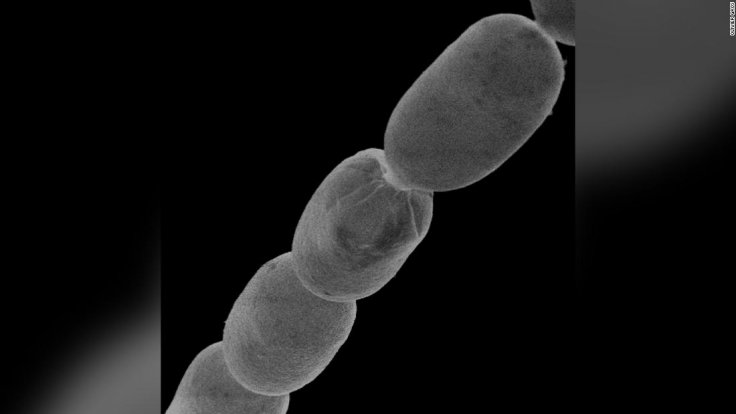Scientists have made an astonishing discovery of the world's largest known bacterium, visible to the naked eye, in the mangrove swamps of the Caribbean.
The strange organism was found in Guadeloupe in the Lesser Antilles and is known to resemble the shape and size of an eyelash.
The bacterium has been named, Thiomargarita magnifica and as per scientists it is approximately 50 times larger than most bacterial species. Discovered on the surfaces of decaying mangrove leaves, the thin white filament is expected to grow up to 2 centimeters long, according to study co-author Jean-Marie Volland, a marine biologist and scientist at California's Laboratory for Research in Complex Systems.

Olivier Gros, a marine biology professor at the Université des Antilles in Guadeloupe, was searching for symbiotic bacteria in the mangrove ecosystem when he came across these strands.
Perplexed by the organism, he decided to conduct microscopic analyses. Gros was initially expecting the filaments to be single cells but was pleasantly surprised when an in-depth analysis revealed a very unusual internal structure, as per The Guardian.
The DNA in most bacteria, is usually observed to be floating around freely inside the cell, but in case of this strange organism the DNA appeared to be systematically organized within membrane-bound compartments.

As models of cell metabolism suggest that no bacteria has ever grown this big, Vollard explained the importance behind this discovery by stating that it is just like a chance meeting between two humans, one of which is "as tall as Mount Everest."
"It's an amazing discovery," said Petra Levin, a microbiologist at Washington University in St Louis, who was not involved in the study. "It opens up the question of how many of these giant bacteria are out there — and reminds us we should never, ever underestimate bacteria."
"The acquisition of this large central vacuole definitely helps a cell to bypass physical limitations ... on how big a cell can be," said Manuel Campos, a biologist at the French National Center for Scientific Research, who was not involved in the study, CBS reported.

Addressing several questions related to the size of the bacterium, Volland believes that it was the need for T. magnifica to protect itself from becoming the food of smaller organism, so it kept growing.
In their study the scientists have also mentioned that T. magnifica was extremely complex as it contained three times as many genes as most bacteria and each of its cells were filled with hundreds of thousands of genome copies.
The study titled, A Centimeter-Long Bacterium with DNA Contained in Metabolically Active, Membrane-Bound Organelles, was published in the journal Science on 23 June 2022.









